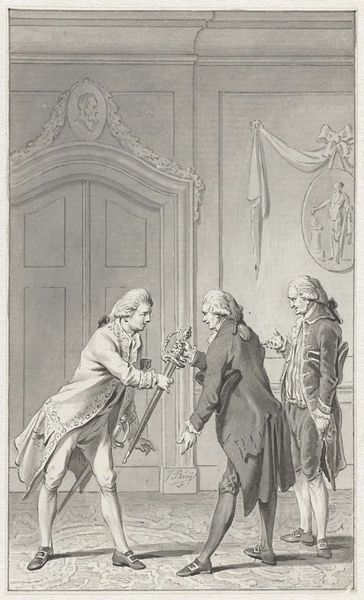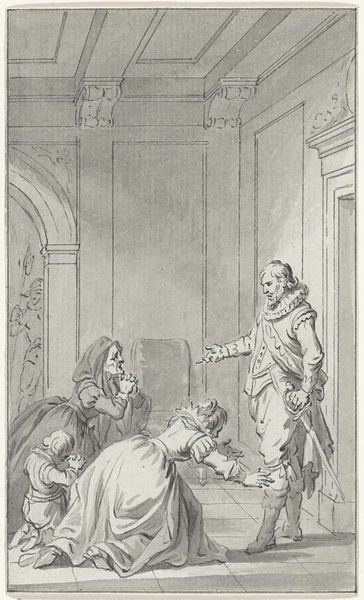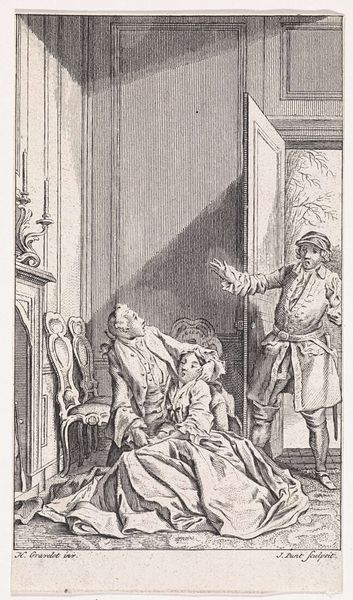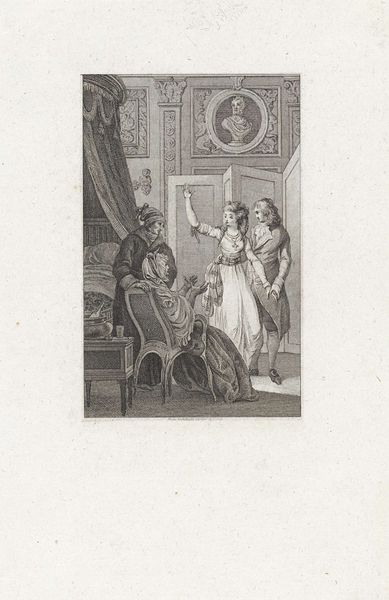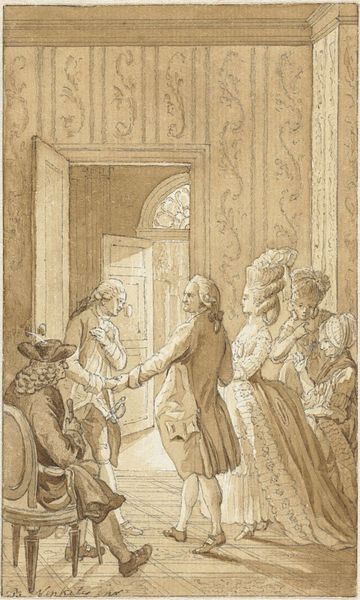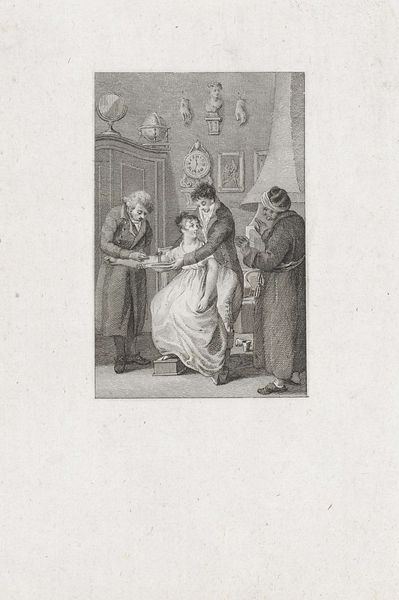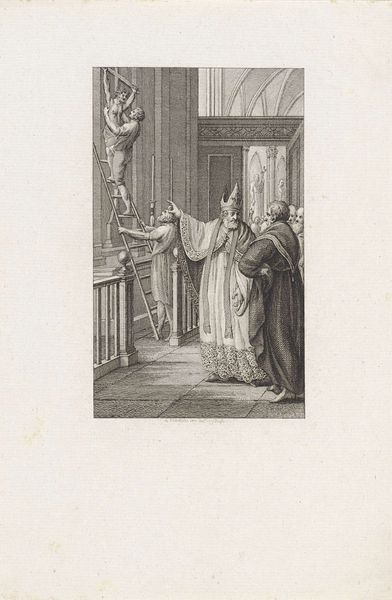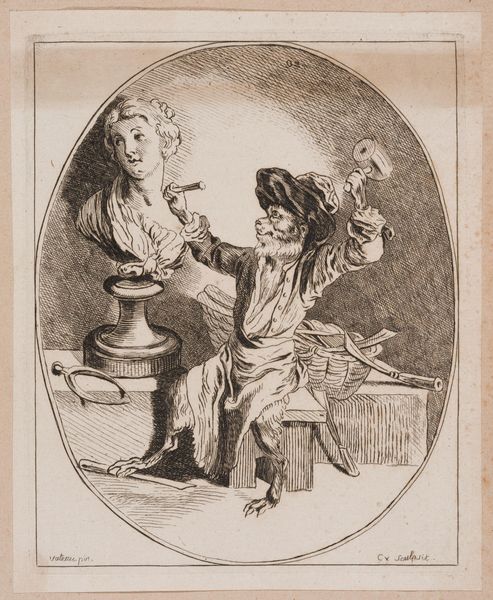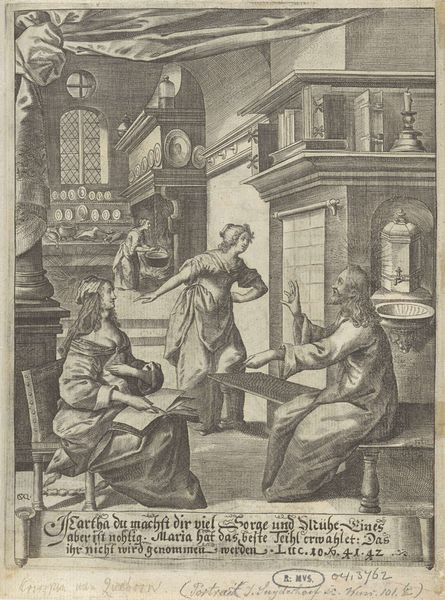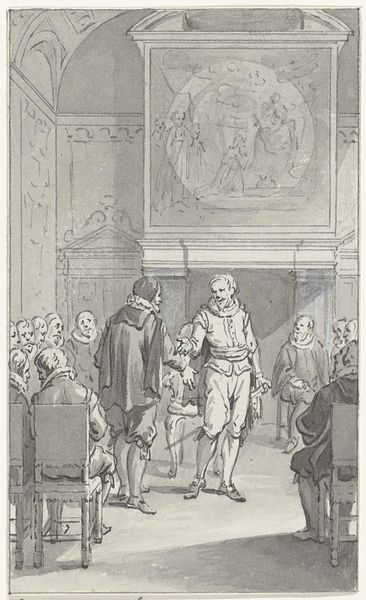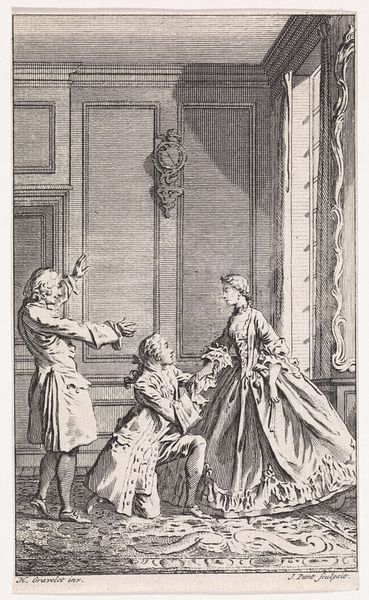
Geschenk aan admiraal Bailli de Suffren namens de Staten-Generaal, 1784 1792
0:00
0:00
jacobusbuys
Rijksmuseum
drawing, paper, ink
#
drawing
#
neoclacissism
#
figuration
#
paper
#
ink
#
genre-painting
#
history-painting
Dimensions: height 149 mm, width 90 mm
Copyright: Rijks Museum: Open Domain
Curator: Well, well, well… doesn't this little scene have an air of suppressed glee about it? Almost a secret whispered in ink. Editor: That’s an interesting way to put it. What stands out for you in Jacobus Buys' drawing, “Geschenk aan admiraal Bailli de Suffren namens de Staten-Generaal, 1784,” made in 1792? For me, it’s this theatrical quality of the three men interacting in this drawing that intrigues me the most. Curator: For me, beyond the immediate emotional read, I see it in terms of how it continues an ancient tradition. We have three men – note the classic number, evocative of countless myths – arranged in what seems a ceremonial exchange. Do you feel how it pulls on motifs that stretch back centuries? The weight of diplomacy is carried in their stances. Editor: Definitely, though with a very Dutch touch! The formal garb meets a domestic interior. It is like a comedy of manners rendered in delicate lines on paper. And this gift is being given within arm’s reach to two onlookers as they give thanks and recognize and acknowledge the admrial Bailli de Suffren’s work to the states-general. What do you feel? That sort of gift giving is common right? I am pretty sure that the figures might resemble Greek and Roman icons. The symbols have so much significance! Curator: Precisely. Even the relatively simple architecture—doors framed with laurel wreaths— speaks to an awareness of civic virtue and classical ideals. Buys clearly invites us to interpret the event through this lens. I like to read into that how symbols shape both reality and perception of power! Editor: Right? I feel so similar! It does, in a way, give the moment a feeling that is a little less personal or human, like they are all just figures acting it out. Even without color, the subtle use of light and shadow creates a real sense of atmosphere. I feel that with that level of consideration this truly elevates what might have been simply a sketch to a nuanced commentary. Curator: In summary, beyond a single moment, Buys has frozen a conversation with the past. He’s asked the eternal questions about legacy. He uses symbols to ensure that memory remains and continues forward into the future as the cycle of civilizations turn forward, not knowing about their futures as much as we cannot rewrite history. Editor: Well put. Here’s hoping we’ve unlocked at least one or two of those whispered secrets in ink, and maybe illuminated just how vital even small images can be!
Comments
No comments
Be the first to comment and join the conversation on the ultimate creative platform.
